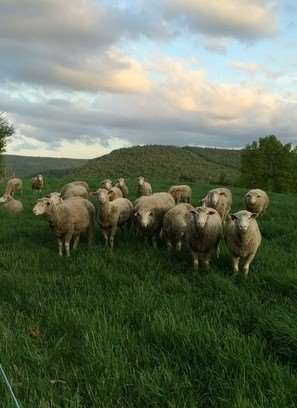By Melanie Barkley

One of the most important components of a sheep's diet is water. Water mineral levels can affect water taste and smell. Poor water quality can affect intake, which in turn affects animal growth and milk production.
In order to maximize feed intake and promote growth, sheep need access to a high quality water source. So, have you tested your water lately to know just what your sheep are drinking?
According to “Nutrient Requirements of Small Ruminants” from the National Research Council, water use during gestation increases as much as 130 percent from the first to the fifth month of gestation. The Sheep Production Handbook from the American Sheep Industry states, “On average, sheep drink about 1.0 to 1.5 gallons of water for each 4.0 pounds of dry matter consumed.”
During cool times of the year, such as in the spring and fall, sheep meet most of their water requirement through consuming pasture. However, obviously, water requirements vary throughout the year and depend on production status of the sheep.
It is also possible for forages to have very high moisture levels that limit dry matter intake. In other words, the sheep fill up on water and do not consume enough dry matter to meet nutrient needs.
Several other factors can affect water consumption. Temperature is probably the most obvious. Sheep normally consume more water when temperatures rise above 70 degrees F. Increased water intake allows sheep to account for higher levels of water loss due to increased respiration, or rapid breathing, on hot days. On the other hand, when temperatures fall below 20 degrees F, water consumption drops. Low water temperatures also affect rumen microbial function. This can then decrease milk production for ewes nursing lambs during cold weather as well as growth rates for lambs.
The Sheep Production Handbook goes on to explain that ideal water temperatures range between 45 and 55 degrees F. While it is not practical to maintain these water temperatures at all times, sheep producers can keep this in mind throughout the year. During the summer, producers can locate water troughs in shaded areas whenever possible. For the winter, heaters will not only prevent freezing, but can also help to keep water temperatures closer to ideal.
Unless you hand water your sheep, you may not be aware of how much water your sheep drink on a daily basis. However, testing water is one method to assess potential intake. Check with your local Cooperative Extension office to locate a water testing company near you with the ability to assess water quality for livestock. Here are some parameters to consider when you look at the water test results:
- Livestock can tolerate some bacteria in the water. The preferred range according to the Agricultural Waste Management Field Handbook of the Natural Resources Conservation Service (NRCS) is less than 200 per 100 ml, but these bacteria should not be fecal coliform bacteria. Any presence of fecal coliform bacteria can create problems in young animals, although older animals can tolerate up to 10 per 100 ml.
- Water pH studies have shown few if any livestock health issues or decreased performance. However, NRCS recommends water pH fall between 6.8 and 7.5, with expected problems to occur when the pH falls below 5.5 or is above 8.5
- Total dissolved solids (TDS) assesses the total amount of all inorganic contaminants in a water sample, often thought of as mineral levels. NRCS suggests that TDS levels should be below 500 mg/L, although TDS levels up to 3,000 mg/L can still be acceptable, depending on the exact contaminant in the water. Several research studies showed that sheep are much more tolerant of high TDS levels than other livestock species and extend this maximum to 10,000 mg/L, except for lactating ewes. However, be aware that high mineral levels that cause decreased water intake, could lead to problems with urinary calculi, particularly in rams and wethers. Animals may experience some diarrhea and short-term decreased water intake when first introduced to water sources with 2,000 to 4,900 ppm TDS levels according to Nutrient Requirements of Small Ruminants.
*Discuss any concerns about your water test results with your veterinarian or your nutritionist.
Aesthetic pollutants, such as iron, manganese and sulfates, commonly cause water related problems because they influence the taste and smell of the water and can result in decreased intakes. Other pollutants, such as nitrates and heavy metals, can cause health related issues. Although NRCS has no recommended maximum standards for iron and managanese levels for livestock, the human standard should be below 0.3 mg/L for iron and 0.05 mg/L for manganese. The desired level of sulfates in water for livestock is less than 250 mg/L, and the expected problem range for livestock is set at over 5,000 mg/L. Recommended nitrate levels should fall below 100 mg/L.
Overall, a clean, fresh and cool water supply is important to promote growth and performance in a sheep flock. For more information on water quality for sheep, check out the Nutritive Needs of Sheep section in the Nutrition chapter of the Sheep Production Handbook, Nutrient Requirements of Small Ruminants, or the Agricultural Waste Management Field Handbook.
Source: psu.edu